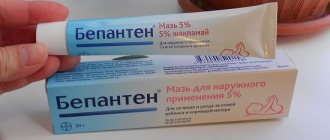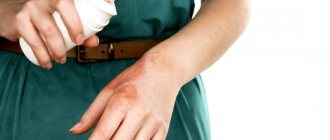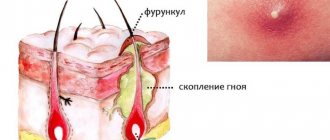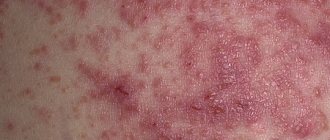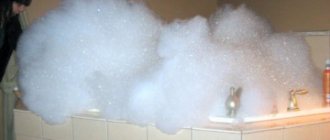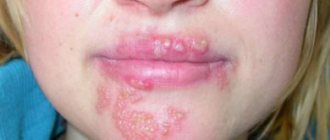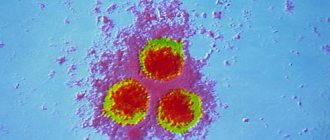Pain relief for radiation burns
The first step to relieve pain is to cool the burned area.
For 1st and 2nd degree burns, the wound should be kept under cold running water for 10-20 minutes. The second action is to apply an aseptic dressing with Furacilin 0.02%.
How to relieve pain from a burn with medications at home? You can take Nurofen, Nimesil, Dolaren, Pentalgin or Analgin. For 1st-2nd degree burns, 1 tablet is enough. After severe pain has subsided, you can use ointments and gels:
- Ebermin ointment;
- Panthenol ointment or spray;
- Solcoseryl gel;
- Bepanten;
- Levomekol.
To reduce symptoms, you can also use traditional painkillers for burns. Such recipes are allowed only for 1st degree thermal burns. For more serious injuries, home remedies will be useless or even dangerous.
| Folk recipes | Application |
| Grated potatoes. | The resulting mass is placed on the burn and covered with a bandage or bandage. Hold until the compress warms up. Then replace with a new one a few times a day. |
| Golden mustache | Mash the plant until the juice appears. Then apply it to the damaged skin and secure with a bandage. Leave for 2-3 hours twice a day. |
| Chilled kefir, sour cream | Periodically smear the affected area. |
| 1 yolk, 2 tbsp. sour cream. | Mix until a thick mass is obtained. Apply to the burn, cover with a sterile cloth and leave for 2 hours. |
At 3.4 degrees, potent medications will help relieve pain in a burn department in a hospital setting and only as prescribed by a doctor.
- Moradol injection solution. It is administered intravenously.
- ParaPran dressing containing lidocaine.
- If there is a threat of painful shock and death, Morphine is used.
At home, before the doctors arrive, you can take 1 tablet of Analgin, Ketorol or Nise, Nalgesin powder. You can also drink Ketanov, Ketoprofen. Take no more than 1 tablet per dose and strictly follow the instructions, choosing only one of the drugs. Your doctor will help you decide on the use of gels, ointments, and sprays.
Features of such lesions are the absence of blisters and the appearance of rough ulcerations with a dense crust (eschar). Pain management is more complex.
- Wash off the chemical under running water for 15 minutes. But it is forbidden to wet the burn wound with aluminum powder due to the risk of fire. Preparing disinfectant mixtures (vinegar, soda, citric acid) at home is prohibited due to the risk of unpredictable reactions.
- Before the ambulance arrives, the person needs to be anesthetized. Any non-steroidal anti-inflammatory drugs (Nimesulide, Meloxicam, Ketorolac) or combination drugs (Baralgin, Pentalgin) are suitable for these purposes. No more than 1 tablet per dose of one of the drugs.
Pain relief and subsequent treatment for such burns takes place in the clinic. Before the ambulance arrives, the following actions are allowed to relieve a pain attack.
- Pour cool water over the affected area, then treat with aqueous Chlorhexidine 0.05% and apply Furacilin 0.02% solution to the affected area.
- Carry out pain relief with any suitable drug from the first aid kit: Analgin or Analgin-quinine, Ketanov. By choosing only one of the drugs.
Pain relief for burns is permitted using non-steroidal anti-inflammatory drugs or combined analgesics. It is important to know what medications the patient is taking and whether there is an allergy to this drug. To relieve a severe pain attack, you can drink any painkiller from your home medicine cabinet: from traditional Analgin and Ketoprofen to the new generation analgesics Xefocam.
Skin lesions come in different types. There are thermal, chemical, electrical and sunburns. Some form slowly, causing severe pain, while others appear immediately and require immediate treatment:
- exposure to hot objects, fire, steam from an iron, welding or hot liquid causes thermal damage. The burning sensation is not strong, increasing, and sometimes does not appear at all. The main thing is to immediately cool the skin;
- chemicals, industrial vapors and nitrogen gas, solvents and cleaning products form deep wounds on the skin, delamination of the dermis. They take a long time to heal, itch and leave scars. Alkaline wounds should not be washed with cold water, and acids must first be removed from the body with a dry cloth;
- electric shocks, lightning strikes or contact with exposed wires are electrical injuries that sometimes lead to charring of bones. Swelling appears on the epithelium at the inputs and outputs of the current, and all damage is localized internally. Ice applied for an hour helps relieve pain from a burn;
- Sun or ultraviolet rays after tanning provoke redness of the epidermis and swelling. They are easily anesthetized and heal quickly. Cold soaks help relieve the reaction.
You can relieve pain from burns at home in several ways:
- cooling with cold: relieves the first pain, reduces the lesion.
To completely relieve the burning sensation and soothe the skin, it is necessary to cool the dermis under water for at least 20 minutes. A chemical burn must first be pre-treated - alkali with vinegar, and acid with soda solution, and only then washed with water; - taking anesthetics and analgesics: pain relief of this kind for burns is required in the second and third degree of damage - the victim’s pain does not stop, swelling of the skin or swelling of the mucous membranes occurs. Analgin, tempalgin or ibuprofen act quickly - the tablets relieve discomfort for 8 hours. Additionally, you can use anticlafinac. If medications cannot help, then emergency medical attention and anesthesia are necessary;
- lotions, ointments and compresses: enhance the effect of pain relief. A liquid solution of the drug lidocaine or novocaine is suitable. The product is applied to a napkin and applied to the burned area. Before this, the skin must be treated with cold water and disinfectants. For example, levomekol;
- Burns can be relieved at home using traditional medicine. They have no contraindications and are suitable for reducing pain. Used for minor injuries on the face, hands, as well as burns of the respiratory tract.
How to understand that a wound needs to be numbed:
- sharp pain appears;
- blisters with liquid form;
- skin color changes;
- dryness occurs;
- the epithelium swells.
With such symptoms, you must follow the following sequence of actions:
- Rinse the wound under cold water.
- Treat it with an anti-inflammatory agent.
- Take painkillers.
Damage to soft tissues from a burn varies in degree. But pain sensations do not always correspond to their level.
With deeper injuries (grade 3-4), the damage can reach the bones. The tissues practically burn out and along with them the nerve cells are destroyed. For this reason, a person who has received severe injuries experiences pain when exposed to high temperatures, and then its intensity decreases significantly.
After some time, the stage of active regeneration begins, inflammatory processes occur and painful symptoms return. Consequently, with deep burns, the victim rarely needs pain relief. The exception is receiving injuries of varying degrees. To alleviate the condition of the injured person is one of the main principles of first aid.
Before taking any action, you should determine:
- source of damage;
- degree of damage;
- characteristics of injuries and their location;
- general condition of the victim;
- make sure there are no allergies to the drugs used.
The main first aid methods for burns include:
- cooling the injured area;
- anesthesia;
- disinfection;
- in case of urgent need, apply a transport gel bandage or film.
There are a number of effective and safe means that can help a person at home:
- Cold running water soothes the affected skin and prevents injury from occurring at the burn site. The affected area should be kept under water for 15-20 minutes, this will help relieve the pain a little. This method can be used for burns of 1st and 2nd severity, if there are no blisters. If they appear, they cannot be washed with water.
- Washing the burn. You need to take a mild antibacterial soap and clean the affected area. This procedure should be carried out after washing the skin burn area, this will prevent infection and infection.
- A bandage will be needed for areas of the skin that come into contact with any surfaces, so as not to contaminate the wound. For it, you need to select a fabric so that it does not stick to the affected area. For grade 1, a bandage is not required, but for other cases it may be necessary; you need to look at the condition of the wound.
For 1st degree burns, the pain is permanent and does not require anesthesia. With 2nd and 3rd degree burns, very severe pain occurs because nerve cells are affected, which transmit an alarm signal to the brain. With 4th degree burns, necrosis of the deep layers of the epithelium and muscle fibers, including nerve endings, occurs.
At home, only 1-2, sometimes 3 degree burns can be treated.
After receiving a thermal burn, the victim must be given a tablet of analgin, ketanol or another drug from the category of analgesics. As an alternative, for severe pain, you can take an ampoule of novocaine or lidocaine and pour the contents onto a piece of bandage. Apply a generously soaked bandage in the solution to the burned area.
The child has
Burns are especially dangerous for children. The physiological characteristics of a child’s body are such that even a moderately high temperature can cause tissue damage. In children, burns are much more severe than in adults and are often accompanied by the development of burn disease. Both the burns themselves and their consequences are dangerous - wet wounds that do not heal for a long time, infection of the burn surface, the formation of rough scars that become a serious cosmetic problem.
If a child is injured, it is necessary to urgently and correctly provide first aid to the child. Incorrect actions by parents can significantly complicate both diagnosis and further treatment.
After washing the damaged area, Panthenol aerosol (used from birth) or Olazol spray (pain relief, prevents infection, accelerates healing, used in the treatment of burns in children over 2 years old) will help to numb the child’s burn. If the pain is severe, you can give your baby a non-steroidal anti-inflammatory drug (Panadol syrup, Nurofen, Ibufen).
It is forbidden to treat damaged skin with fatty substances (oil, baby cream, fat-based ointments) - they create a thick, oily film on the surface of the skin that prevents the natural cooling of the tissues.
After providing first aid, you need to wait for the ambulance to arrive or take the child to the hospital. Children under one year old, with an injury area of more than 2% of the body surface, with burn injuries to the face, eyes, and upper respiratory tract, are treated for burns only in a hospital setting.
A burn is always accompanied by severe pain, burning, and redness of the skin. To alleviate the condition of the victim, you need to rinse the damaged area with cold water or apply a cool compress and give a pain reliever. The further prognosis largely depends on the timeliness and quality of first aid.
Various folk remedies can also help relieve burn pain at home. But it is important to understand that they can only be used in cases of mild damage, accompanied by redness and the appearance of small blisters. Severe deep and/or extensive injuries often occur with the development of painful shock, disruption of the heart, kidneys, and liver, and therefore require competent drug treatment in a hospital setting.
Cold on a burn
Cooling with water or ice is a well-known method. To improve the condition, it must be used correctly:
- Do not use too cold water: the liquid must be cool.
- If ice is used, it should be wrapped in a thick layer of cloth and plastic to prevent the threads from sticking to the wound. Its exposure time should not exceed 5 minutes.
- The decrease in temperature should be gradual.
- Cooling under running water lasts about 20 minutes. This procedure will have a longer lasting analgesic effect and will not harm the affected surface even more.
These rules are based on the fact that a large temperature difference only worsens the condition of the skin. With sudden cooling, the remaining heat does not come out, but spreads into the deep layers of the dermis, which makes the injury more extensive, and tissue death occurs faster due to frostbite.
If the burn is caused by chemicals or grease (oil), you should first carefully remove any remaining residue. Shake off the powder, protecting your eyes; blot the fat with a bandage, and then place the injured area under running water.
Features of pain relief from chemical burns
Chemical skin burns occur after exposure to aggressive reagents and chemicals on the skin. They are divided into deep and superficial. A distinctive feature of such burns is the absence of blisters (except in rare cases) and the appearance of rough ulceration with a dense scab due to the penetration of a foreign substance into the deep subcutaneous layers and cell necrosis. Tissues take a long time to heal after a chemical burn, but the skin regenerates poorly. After recovery, scars or deep scars often remain on it.
Painkiller pills
The next step is taking analgesics - special medications that block pain. Before using them, you should make sure that the victim is not allergic to the components and has no contraindications to their use.
The most common medications that are present in every home medicine cabinet are Analgin and Tempalgin. Effective painkillers also include Dollar (Dolaren), Pentalgin, Nise, Solpadeine. All of them have a number of contraindications and side effects, so care should be taken to prevent the victim’s condition from worsening. Some medications may increase bleeding from open wounds.
You should not expect rapid action from tablets: they require time to dissolve and be absorbed into the blood. Therefore, if the victim feels tolerable, it is better to wait for a doctor who will administer the necessary drug intravenously or intramuscularly. If the medicine was nevertheless taken, doctors should be notified about this so that when providing assistance there is no incompatibility of medications.
Review of pharmaceutical painkillers
For local treatment of burns, antibacterial, stimulating and compositional agents are used. They are easy to find at any pharmacy. The first ones must be applied to deep wounds to avoid sepsis:
- iodine-based products: betadine, vocadine;
- salts: rokkal, ethonium;
- silver: poviargol in solution.
All three groups can be used for primary skin treatment. They remove germs.
These drugs can also reduce pain and relieve swelling. They can be used by pregnant girls and children.
The use of ointments, creams or sprays is allowed only for shallow skin lesions. It is best to apply them immediately after receiving a thermal burn, since only in this case the effect will be maximum.
Such products are suitable for relieving pain from burns caused by hot water, steam or any chemicals. If the injury was caused by an open fire, it is useless to use these drugs. The following products do an excellent job:
- Panthenol;
- Sulfargin;
- Solcoseryl;
- Bepanten;
- Radevit.
All these drugs have anti-inflammatory, analgesic and regenerating properties. Before using any drug, it is important to ensure that there is no risk of an allergic reaction.
If a small child is burned, pain relief will primarily be based on exposure to cold water. If there is a spray that is suitable for use by children, it can be used to treat the injury site. It is allowed to use Paracetamol or Ibuprofen. For extensive burns, you should call an ambulance as soon as possible, and possibly go to the hospital.
Local remedies
Local preparations help disinfect the surface and relieve pain. These include ointments, gels, sprays, solutions and foams. They eliminate painful symptoms faster than tablets, reduce swelling, disinfect the surface, and subsequently promote tissue restoration and regeneration. Before applying them, the wound should be treated with one of the antiseptics:
- Chlorhexidine;
- Miramistin;
- Betadine;
- hydrogen peroxide 3%;
- Furacilin tablet diluted in water.
After this procedure, healing agents are applied. In case of severe burns of III A-IV degrees, their use is prohibited without a doctor’s instructions, since lubrication can cause infection, further injure the affected area, or cause severe pain to the victim. In addition, there is a high probability of overdose of active components due to direct absorption of the drug into the blood, which often leads to disruptions of the central nervous system and the active manifestation of side effects.
Panthenol
Panthenol is one of the most famous and widespread drugs for skin injuries. The most convenient form of release is spray foam, since application does not require direct contact with the surface, which eliminates the pain of treatment. Thanks to the active component - dexpanthenol - the foam helps reduce inflammation, has a wound-healing and disinfectant effect, and stimulates the process of tissue restoration without scarring.
The product is completely safe, has no side effects or contraindications, even when treating a child or a pregnant woman. Panthenol is recommended to have in every home medicine cabinet, as they are allowed to treat any skin damage without the approval of a doctor. It does not accumulate in the body. The acids contained in its composition are included in the structure of biological tissues. It can even treat the oral cavity.
Panthenol is also available in the form of a cream, which is suitable for lubricating minor injuries.
Radevit
Radevit is a fortified ointment with analgesic, antiseptic, regenerating and moisturizing effects. It is used not only for burns, but also to treat other types of injuries. At the first application, the metabolism in the cells is accelerated, the recovery process is activated, and pain is quickly neutralized. The ointment eliminates itching, prevents peeling and cracking of the resulting crusts during the healing process.
The drug does not contain harmful substances, so it can be used by pregnant women and children (even under the age of 1 year). Therapy should not last more than two weeks. The shelf life of the product after opening is limited to 3 months. Radevit has a thick, oily consistency, is absorbed slowly and can leave marks on clothes.
Bepanten plus
The active component of Bepanten Plus cream, like Panthenol, is dexpanthenol, so it has similar properties. In addition, the drug contains an antimicrobial complex, quickly relieves pain and cools the surface well. Can be used in the treatment of infants and pregnant women.
Sulfargin
Olazol
Another product in the form of a spray is Olazol. It can be used for an unlimited time, but before applying it, you should rule out allergies to the components (chloramphenicol, anesthesin, sea buckthorn oil) by doing a test on the wrist. The foam can be applied every time the injury begins to hurt badly. Its complex effect allows you to replace several types of medications at once, which makes it profitable and quite in demand.
Degree of burns
- 1st degree – the skin is red, swollen, the epidermis is affected. Gradually dries out and is replaced by new cells. It goes away on its own, leaving no traces.
- Grade 2 – Blisters and pain appear. The bubbles collect clear liquid and burst, exposing the very sensitive red layer. If there is no associated infection, rapid regeneration occurs, everything heals without traces in two weeks.
- Grade 3 – blisters with blood content, redness of the surrounding areas, severe swelling and hyperemia. The skin dies with the formation of dense scabs of gray and black color. This is an open wound that can easily become infected. Severe pain at the time of injury, then as tissues and nerve endings die, it decreases, and as inflammation develops, it appears again. The patient experiences intoxication, tachycardia, blood pressure drops, and temperature rises. Urgent hospitalization is required; it is impossible to numb the burn at home at this level of severity. The epidermis does not recover on its own; surgical treatment is often required; recovery is slow, up to several months, and scars remain.
- Stage 4 – all layers of skin and tissue die completely, up to the charring of bones. The tissues melt and are rejected within a few weeks. Possible loss of limb and death. Necrosis spreads to surrounding tissues, black and brown scabs form. There is a high probability of painful shock. The patient’s life is in danger and depends on the speed of provision of specialized medical care. There are many plastic surgeries in the future; treatment takes many months and even years.
There are many reasons that contribute to the formation of burns, but you cannot begin treatment without establishing its exact degree. Conventionally, they can be divided into first, second and third degree burns.
First degree burn
Minor damage to the skin can be classified as first degree. Slight redness appears on the skin, and the person feels slight pain. There is no need to hospitalize the patient, since he can be treated at home.
Second degree burn
This degree is characterized by penetration of the burn deep into the skin. Not only redness occurs, but also blisters filled with clear liquid. As a rule, they appear after scalding with a hot liquid, or after contact with chemicals. After treatment is carried out, scars and scars may remain.
Third degree burn
You definitely need to know how to treat a burn at home at the healing stage. After all, at this stage the main task is disinfection and healing of the skin. Quite often after burns, blisters containing a clear liquid appear. If the correct treatment is carried out at this moment, then suppuration and inflammation can be avoided.
After burns, the skin becomes very sensitive and tender; in order to speed up the regeneration process, you need to use various ointments and creams. Thanks to them, damaged tissue is restored, and burn marks are eliminated.
If something goes wrong, an infection may develop. The skin may become very inflamed and pus will appear. The patient will begin to complain of feeling unwell, and the body temperature will rise. Infection can cause scars and welts to form.
If wounds take a very long time to heal and constantly get wet, it is recommended to use potassium permanganate. It dries the wound and promotes its healing.
You can also use pork fat, egg oil, cottage cheese to speed up the healing process.
Traditional methods
- A compress of grated raw potatoes relieves pain well. The pulp is squeezed out, placed between layers of gauze and secured to the affected area with a bandage. Leave for 15-20 minutes.
- Aloe pulp or juice effectively eliminates pain, disinfects the surface and cools it. The plant mass is applied to the damaged area and fixed for 30 minutes.
- Lubricating with fermented milk products (kefir, sour cream, yoghurt, fermented baked milk) cools the skin and neutralizes the burning sensation.
Such treatment methods can be used in conditions where quick medical care is not available, for minor closed injuries and only after cooling. They should not be used on open, oozing, inflamed or infected wounds.
However, a household burn almost always occurs at home, and the necessary medications may not be at hand. What can you do to relieve pain in this case? Here are a few remedies:
- potato;
- aloe;
- Black tea.
Surprisingly, a potato compress can not only soothe the skin, but also reduce the effects of a burn. In order to numb the affected area, you need to grate the potatoes on a fine grater and apply the resulting pulp to the burnt finger. Some even simply cut the vegetable into 2 parts and applied the cut to the damaged area. The pain goes away very quickly, and blisters appear only in very rare cases. The duration of the compress is 15 minutes.
Aloe juice has healing properties. To obtain it, just carefully cut a flower leaf and apply the released juice to the burn. The product can be secured to the finger with a bandage and left for half an hour.
Chilled black tea relieves pain perfectly. If possible, you can take a bath with a cold drink. As a last resort, you can moisten the bandage and tie it around the affected area.
If there are no quick-acting medications in your home medicine cabinet, then the pain will be relieved by natural ingredients:
- potatoes – reduces pain and reduces tissue destruction. Leave the grated root vegetable on the skin for 15 minutes and rinse with cold water;
- aloe – if you get burned, this plant will help speed up healing. It is enough to cut the leaf and apply it to the wound for 30 minutes;
- cabbage – prevents swelling and relieves redness. Cabbage leaves must be fixed to the epithelium for 2 hours. And then remove it. Repeat the procedure twice a day;
- plantain - a herb that will help remove inflammation. It must also be applied for 2 hours, like cabbage leaves.
How to numb a burn at home?
There is a wide variety of folk recipes that can be used to numb a burn. How to relieve pain from a burn using traditional therapy?
- Grate raw potatoes on a fine or medium grater. Squeeze out excess juice. Apply sterile gauze to the burn site, apply potato pulp on top, then reapply the gauze bandage and secure the compress with a bandage. The application time of the compress is 15 minutes.
- Cut the aloe leaf in half. Apply the wet part of the leaf to the burn site. Secure with a bandage. Exposure time is up to half an hour.
- Prepare a decoction of oak bark. Soak a small piece of cotton wool in a cool broth and use it as a lotion.
If traditional recipes are ineffective and the pain from the burn does not go away, the victim needs to consult a doctor.
Intramuscular drugs
For this reason, they cannot be purchased in pharmacies without a prescription. Medicines in injections are more potent than tablets. They have a number of contraindications. Exceeding the permissible dosage causes respiratory and cardiac arrest. Violation of the process of introducing a particular drug leads to serious consequences.
Emergency physicians often use synthetic morphine substitutes - Promedol and Moradol. They act quickly and safely, but have their side effects. Moradol is not administered to persons under 18 years of age. If there is a threat of life-threatening painful shock, the doctor may inject morphine.
When pain may not be felt
The main condition under which a burn does not leave a mark and does not cause discomfort is the use of healing components. Otherwise, complications are possible: skin infection, abscess, swelling, severe pain and scars.
What should not be used for burns:
- iodine, brilliant green, alcohol-containing solutions: irritate and dry the skin;
- fats, oils: increase the temperature and prevent the natural cooling of the dermis.
It is not recommended to rub or mechanically impact the damage. If a blister forms, you should not touch it or burst it - this can spread the infection into the deeper layers of the skin.
With a careful approach and proper treatment, the burn will go away quickly and will not leave scars.
Article verified
by the editors
If it is obvious that the burn is quite severe, and the victim practically does not complain of pain, it is almost impossible to provide help at home. Treatment should be carried out in a hospital setting. All that can be done on your own is to give the victim something to drink, cover the wound with sterile gauze and take the person to the hospital as soon as possible.
Severity
There are four degrees of burns:
- 1st degree. A minor burn that only affects the outer layer of skin.
- 2nd degree. Not a severe lesion, but affects a deeper layer of tissue.
- 3rd degree. Severe burn affecting all layers of tissue.
- 4th degree. The most severe lesion affecting bones and joints.
1st and 2nd degree burns can be treated at home within 7-15 days. And grades 3 and 4 need to be treated only in a medical facility; the time of therapy depends on the severity of the lesion.
Alcohol for burns
Many people believe that alcohol can serve as an anesthetic in any situation. But, from the point of view of medicine and human physiology, this method is not only useless, but also dangerous.
- Alcohol increases blood circulation, which can worsen the situation with open wounds and bleeding.
- It is incompatible with many medications, changes their properties, reduces their effectiveness, or creates a toxic compound with them that poisons the body.
- If the victim is weak, taking alcohol-containing products can lead to loss of consciousness and fainting.
The choice of anesthetic method always remains with the patient or the first aid provider if the victim is unconscious. But, as practice shows, the use of traditional medicines is much safer and more effective. Therefore, your home first aid kit should always have a reliable remedy that will help out in such an emergency as getting a burn.
A burn is damage to tissue or skin. Such a nuisance occurs due to exposure to high temperature, radiation, radioactivity, electricity, or contact with chemicals. Thermal burns result from tissue destruction caused by hot liquids, solid objects, or flames. Many people are interested in how to numb a burn at home. Let's talk about this further.
Every second person has encountered such a problem in their life, be it thermal, chemical or solar damage. Often, minor burns can be treated on your own at home. But there are also serious ones, which can only be gotten rid of in special institutions with the help of medical workers. Based on the latest data, women are more likely to get burns than men.
What determines the choice of method
Pain, first aid methods and their effectiveness depend on the type and degree of the burn. The cause of this injury can be not only high temperatures, but also chemicals, electric current, and radiation energy.
The most common cause of household burns is thermal exposure.
Its source may be:
- steam;
- hot liquids;
- hot objects;
- open fire.
For any burn, indicators such as the duration of the traumatic effect, the depth and area of the lesion are of no small importance. Depending on the severity of the damage, it is customary to distinguish between four degrees of burns:
Depending on the severity of the damage, it is customary to distinguish between four degrees of burns:
- Minor damage, accompanied by pain, redness, slight swelling, goes away on its own, leaving no traces after healing.
- Relatively severe damage, accompanied by pain and blistering, heals in about two weeks, usually leaving no traces due to the regeneration of skin cells.
- Severe damage to all layers of the skin down to the subcutaneous fat, independent healing is possible only if the dermis layer containing hair follicles, as well as sebaceous and sweat glands remains intact.
- The most severe of all, is expressed in the death of all layers of skin, subcutaneous fat, muscles, up to the charring of bones.
Of course, the stronger the injury, the more pronounced the fighting sensations. Grade 1 and 2 injuries can be relieved by immersing the affected area of skin in cold water for 10 minutes. This is the simplest method that you can resort to if you don’t have any special tools at hand. If you have anti-burn medications in your first aid kit (Panthenol, Argosulfan), it is advisable to treat the wound with them, since most of them have an analgesic effect and also disinfect the injury.
It should be noted that with burns, favorable conditions arise for the development of the inflammatory process. An infected wound is more dangerous, less treatable, and takes longer to heal.
Almost all external medications used to treat skin lesions have an antimicrobial effect, so it is better to apply them to the wound immediately after its formation.
For grade 3 and 4 injuries, professional medical attention is required. The victim must be transported to a burn center as quickly as possible. However, at the same time, he needs to be given first aid, first of all to calm the pain. To do this, the victim must be given painkillers orally or by injection.
How to numb an injured area
And all because they cook over an open fire or on unsafe stoves, which can cause clothes or any other thing to catch fire. At the same level, children are also vulnerable to injury. Burns can occur both at home and at work. But according to research, 80% of burns occur at home.
Heat penetrates deep into the skin after a thermal burn. Cooling the burned area will reduce the depth of tissue damage - the cold will stop the spread of heat deep into the body. At home, you can use running tap water by placing the affected area under a cold stream of water. In outdoor conditions, use bottled water or apply soft ice for 20 minutes.
It is important! It is better to apply ice from the freezer wrapped in a thick towel. The cold should gradually cool the burned tissue.
Ointments and pharmaceutical anti-burn products are intended for pain relief, protection against infection of open wounds, their healing, softening of the skin and drying of weeping blisters. The most effective medications:
- Panthenol. The most effective and affordable pharmaceutical remedy for reducing pain and preventing the formation of a bubble on the burned area in the form of a foam spray. Before use, shake the can thoroughly and apply the foam evenly to the affected area of the skin.
- Levomekol. Antibacterial ointment is recommended for use only after the blister bursts and a purulent open wound appears in its place. The components of the ointment penetrate deeply into the tissue and stimulate the regeneration process of the skin.
- Syntomycin ointment. It has antibacterial, anti-inflammatory, softening, healing and analgesic properties. Immediately after receiving a burn, apply a thin layer of the product. If the affected area is large, it is better to apply a bandage using a napkin generously lubricated with ointment.
- Solcoseryl. The Swiss drug is available in two versions: ointment and gel. They differ in their effect on skin cells. It is advisable to use gels in the first stages of treatment, when it is necessary to create a protective film on the wound, start the healing process and dry the discharged liquid. When the wound begins to heal and a new, thin, pink layer of epithelium appears in its place, you need to switch to Solcoseryl in ointment. Its use will help improve tissue nutrition and speed up the healing process.
- Bepanten. An effective remedy for burns of any origin: thermal, chemical or resulting from radiation. The main purpose is healing and scarring of shallow layers of burned tissue. Available in the form of lotion, gel and cream.
After the initial treatment, you can begin traditional methods of anesthetizing the burn site:
- Cut raw potatoes in half and apply to the sore spot. If the wound is more serious, grate the potatoes, spread the mixture on a soft cloth and make a compress;
- Whisk the egg white and gently apply to the affected area;
- Aloe. Take the thickest leaf of the plant, cut it and apply it to the sore spot;
- Laundry soap is also a great way to reduce pain and disinfect the wound. Simply rub the affected area of the body with soapy water while washing.
Treatment
For burns, the following treatment is carried out:
- With a 2nd degree burn, blisters may open, so antibiotics must be used. The use of antibacterial ointments or sprays will help the wound heal faster and rid it of contamination.
- Using painkillers for burns will help relieve pain at home. After all, even grade 1 and 2 lesions bring pain and discomfort until they heal. It is recommended to take a pain reliever for skin burns, such as Ibuprofen; it can be used by children and adults.
- When exposed to UV radiation, you need to wear such clothing to hide the burn site.
- Aloe vera or Kalanchoe are often used - these are plants that have antibacterial properties and help the wound heal faster and protect the affected area from bacteria. For treatment, you need to tear off several leaves from the plant, squeeze the juice out of them and wipe the affected areas once every few hours. You can also grind the leaves into a paste and apply it to the burn site.
- Honey has anti-inflammatory and antibacterial properties. A bandage is made with it to sterilize the burn site and get rid of bacteria. Honey also reduces irritation at the burn site and relieves pain.
- Burdock root. To prepare the ointment, you need to take it and boil it in water for 40 minutes, then mash the root well and add butter to it in a ratio of 1:4. You need to lubricate the sore spot several times a day.
- Potatoes are good for pain relief from burns and recovery. You need to take several raw potatoes and grate them, then apply them to the burn. If you change this compress every 5-10 minutes, this method will help prevent blisters.
- Plantain will also help relieve pain from burns. This is one of the best plants that gives a wound-healing and antimicrobial effect. You need to take a few plantain leaves, wash and mash them, apply them to the burn site, wrap them with gauze and leave them overnight.
- Tea. You need to take black or green tea and brew it. Then take the tea leaves, apply it to the sore spot and bandage it; this compress should be done 6-8 times a day.
- Baking soda is an excellent remedy that should be diluted a little with water until a paste forms. Apply a thick layer to the damaged area and leave until completely dry. After this, carefully shake the baking soda off the area.
Prevention is better than cure
You can die from such exposure if the victim is not given first aid, or you can remain disabled for the rest of your days. There is a whole list of recommendations on how to prevent burns:
- It is necessary to interrupt the body’s contact with a harmful factor, it could be a flame, boiling water, etc. Urgently protect the person from what caused the burn.
- Use safer stoves and fuels.
- Follow safety rules when using kitchen and household appliances.
- It is necessary to ensure that children do not have access to technology.
- Reduce the temperature of the tap water.
- Do not smoke in bed or use lighters, hide from children.
- It is necessary to learn behavior during burns and how to help a person get rid of pain.
- In the kitchen you need to use an apron that is made of fabric that does not catch fire.
How to provide first aid?
The first step is to stop burning. Extinguish the fire with water or other liquid, and allow the victim to swing on the ground. You need to rinse with cold running water to reduce the temperature at the damage site.
If a chemical burn occurs, you need to remove the substance and rinse the area well. The victim must be wrapped in something and taken to a medical facility that is closer to the scene of the incident to receive help. If you have a burn, you should not use oils, they retain heat and cause harm to the wound; provide rest to the victim as a whole or only to the affected areas of the body.
How to numb a child's burn?
If a child receives a burn, it is necessary to urgently take him to the nearest medical facility, even if the resulting burn is classified as mild. At home, the baby needs to be provided with primary care, which includes pain relief at the injury site.
- Cool the burned area of the body with running water.
- If possible, treat the burn site with an anti-burn spray that is appropriate for the child's age.
- In case of severe pain, give the child a painkiller in the form of a spray - Panadol, Ibuprofen.
What absolutely cannot be done?
Before providing first aid, you need to make sure that the danger no longer threatens the person (if the injury occurred due to electricity, then you need to turn it off, if there is chemical damage, then put on protective gloves, and so on). Do not apply paste, oil, or turmeric to the burn area.
You should also not apply ice to the burn site, as it will only worsen the condition of the affected area of skin. You should not rinse the affected area with cold water for a long time, as this can lead to hypothermia; it is forbidden to open blisters until examined by a medical professional, so as not to cause an infection.
You need to wait until the doctor himself applies the antimicrobial ointment or spray. Do not apply anything to the wound, because you can get infected, which will result in an even greater problem for the victim. You cannot use any medications yourself, but must wait for medical help.
